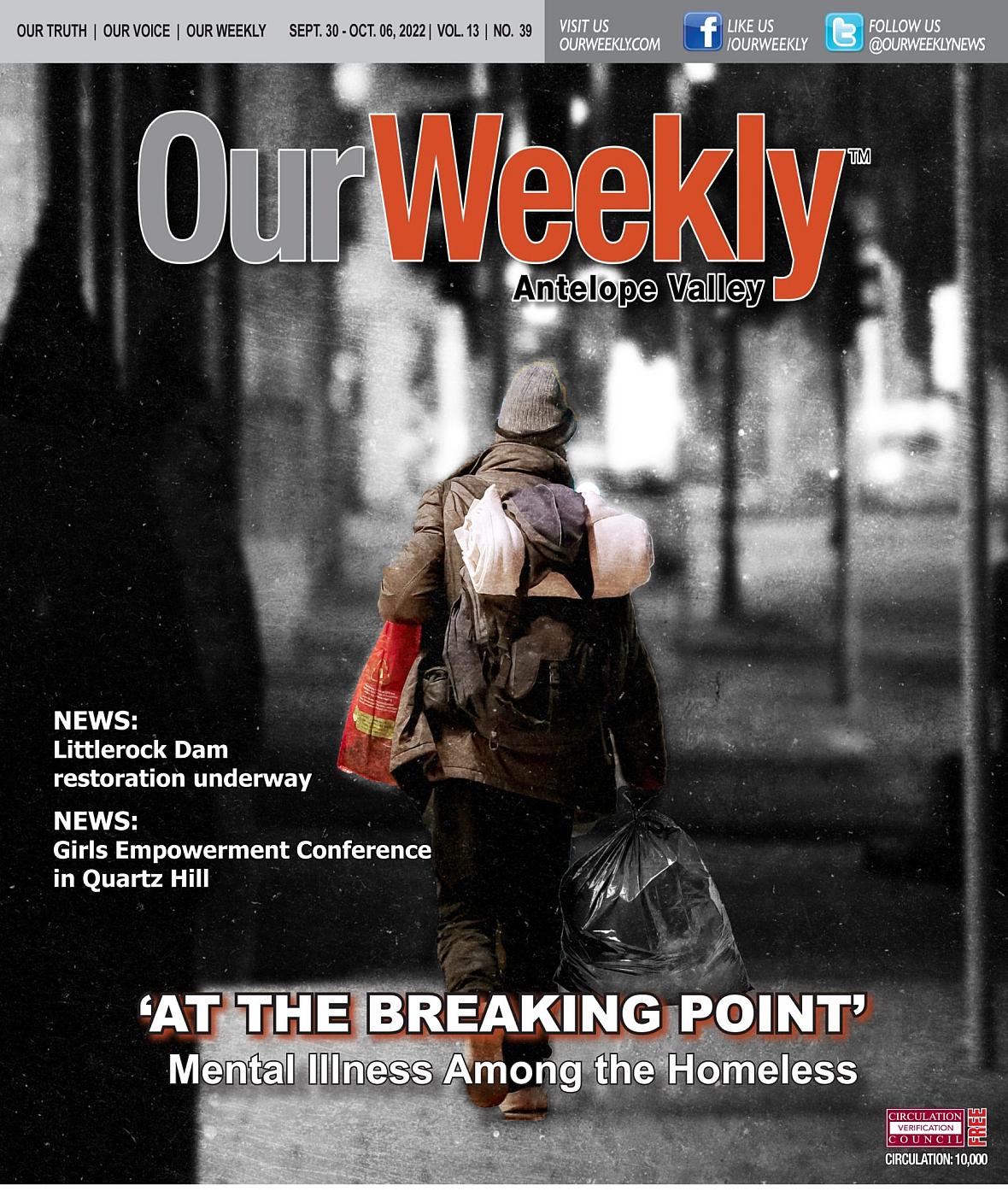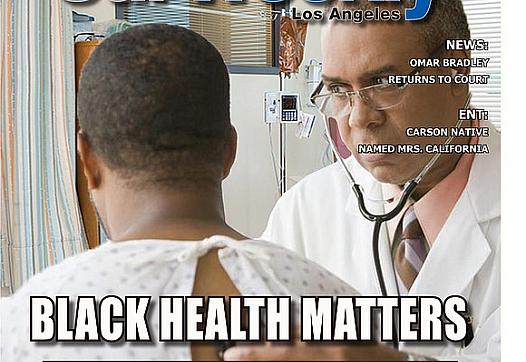Mental illness often contributes to homelessness — and vice versa
This story was originally published in Our Weekly with support from the 2022 California Fellowship.

Our Weekly
A noble objective of CalAIM (California Advancing and Innovating Medi-Cal) is to help facilitate a more smooth transition for persons exiting the carceral system. People transitioning from incarceration face increased risk of adverse health events. This is particularly true of those battling substance abuse of which research (New England Journal of Medicine-2007) has indicated are 129 times more likely than the general public to die of a drug-involved overdose or commit suicide within two weeks after release.
There is hope that CalAIM can help ease the transition back to the community and prevent health and behavioral health complications — including the risk of post-release homelessness.
Addressing behavioral health is a key component of CalAIM. Among the homeless, mental health services are desperately needed, but it is difficult and sometimes impossible to receive adequate services when living on the street.
Presently, the California Department of Health Care Services (DHCS) is proposing reforms to ensure that patients can get treatment wherever they seek care. Sometimes this can be done prior to a formal diagnosis of mental illness and therefore provide a mechanism for reimbursement to managed care plans based on the type of care provided.
In the above circumstance, CalAIM would help to facilitate the integration of speciality mental health and substance abuse services at the county level into one behavioral health managed care program. CalAIM would also include a new benefit — “contingency engagement” — specifically for persons with a substance abuse disorder.
The interconnection between mental illness and homelessness
Mental illness can contribute to homelessness when symptoms become so severe that the person can’t function. Specific symptoms of mental health disorders, such as manic state of bipolar disorder or the psychotic symptoms and paranoia of schizophrenia, can make it difficult to care for oneself and ultimately isolate the person when others don’t know what to do.
The DHCS has reported that half of people who have a mental illness also use illicit substances, often as a way of coping with their illness. As well, according to DHCS findings, half of people who use substances have some type of mental health condition. In order to try “something different,” DHCS has integrated oversight, administration, and payment of specialty mental health and substance use disorder services into one contract between themselves and local counties.
DHCS works with the California Bridge program. Their agenda is to develop hospitals and emergency rooms into primary access points for substance abuse treatment and/or acute symptoms of substance use disorders. They want to better train and educate clinical staff on how to integrate care (e.g. identifying opioid use disorder) in managing and connecting patients with ongoing treatment and care. Through CalAIM, DHCS could make it possible for some patients to receive multiple services in one coordinated location.
Conversely, homelessness can contribute to mental illness because of the severe distress caused by living on the streets. The interconnection between homelessness and mental illness is multifaceted. There is increased urgency among service providers to dispel the fallacy that homelessness and mental illness must forever coexist.
A prime example of the “urgency” are the roughly 2,600 people who make their home along Skid Row in Downtown LA. At only 2.70 square miles, it has been suggested that some 40% of persons there suffer from mental illness.
“The homeless crisis has reached a breaking point in Los Angeles,” said Rev. Andy Bales, chief executive of the Union Rescue Mission. “We’ve left far too many people languishing on the streets for far too long. Mental illness is a primary concern we have at the mission. The longer you leave people on the streets, the more danger they’re exposed to, the more dangerous it is to everyone else.”
CalAIM could potentially reduce health disparities, specifically among persons in historically underserved communities. This is particularly true in terms of mental illness.
Health disparities exist when one population experiences systematically worse health outcomes than another group. For example, homeless persons with mental illness are frequently associated with medical comorbidities for a variety of physical and/or mental health conditions. This, in turn, results in excess mortality.
Rejecting the ‘one-size-fits-all’ to managed healthcare
Mental health experts suggest programs like CalAIM could effectively reduce disparities by improving the health of those persons who regularly suffer from worse outcomes. The homeless population typically tops this list.
“Many of [the homeless] will say they are doing fine, even as they are dying on the street,” said Dr. Johnathan Sherin, former director of the Los Angeles County Department of Mental Health. He referred to a condition known professionally as “Anosognosia,” meaning that a person is unaware of their own mental health condition and can’t perceive their condition accurately.
“It is important that we engage these persons — resources first — and continue to engage the individual to realize the best outcome not only for that person but for the community as a whole,” Sherin explained. Admitting that there are “no easy solutions,” Sherin pointed to the value of determining “who’s out there” (programs/policies/facilities to serve the mentally ill homeless) and proceeding immediately to address the needs of that population.
“We’ve got to do something to break the log jam,” he said. “We’re decades of being negligent. We have to look out for one another, and our elected officials have to be part of the solution.”
Two years ago, the Los Angeles County Board of Supervisors approved a motion directing DMH to deploy the HOME teams to pilot “street-based” treatment and clinical oversight to help the “most vulnerable residents” get on the path to recovery. While this was at the beginning of the pandemic, DMH found that a significant number of deaths were due to “preventable or treatable” medical conditions, including mental illness exacerbated by chronic substance abuse.
LA County Public Health reported more than 1,000 homeless persons perished during the early stages of the pandemic, of which some 30% suffered from mental illness.
The objective of CalAIM is similar to that of California’s Mental Health Services Act (Senate Bill 970) in addressing homelessness and hospitalizations. Here, counties are held accountable for meeting these challenges. The bill is modeled after a “continuous quality improvement” approach to track the progress and steadily improve the lives of homeless persons with severe mental illness and substance abuse disorders. Like CalAIM, SB-970 rejects the “one-size-fits-all” approach in funding county-based programs to help them meet their individual goals.
Various homeless counts often in conflict
Many California counties have adopted innovative approaches to expand and improve behavioral health services. CalAIM is also designed to more accurately gauge accountability in measuring progress or achieving specific outcomes. Maggie Merritt, chief operating officer of the Steinberg Institute, has for the past seven years studied and addressed the challenges to enact sweeping improvements to California’s mental health policy.
“We continue to see people living with severe mental illness suffering on our streets or cycling through hospitalizations, incarceration with no long-term recovery in sight,” Merritt said. “CalAIM has the potential to assist greatly in providing early intervention and offer the service needs of persons with — or at risk of — serious mental health and substance use conditions.”
How many homeless persons in LA County suffer from one or more forms of mental illness? It depends on who you ask. A federally mandated count in 2020 found that about 67% of the homeless population were either “reported” or “observed” suffering from mental illness or substance abuse. But the Los Angeles Homeless Services Authority (LAHSA) put the number at just 29%.
The Los Angeles Times researched the topic and revealed that PTSD affects 51% of the estimated 70,000 persons living on the streets. LAHSA would later release a statement regarding the disparity: “The challenges faced by people on the street who are experiencing mental illness or substance abuse does need to be an important part of the conversation,” the agency concluded.
HOPICS makes strides in South Los Angeles
The California Policy Lab at UCLA took a look at the level of mental illness among the homeless, this time with a more “critical lens.” They utilized a different set of data from a much more comprehensive questionnaire known as VI SPDAT (Vulnerability Index–Service Protection Decision Assistance). It’s mostly used to identify who should be recommended for housing/support intervention. Their findings suggest that mental illness was a “concern” among 78% (nationwide) of homeless persons.
As stated, a prime objective of CalAIM is to meet people “where they are,” but Los Angeles County has made only incremental steps because of a lack of practitioners and people doing so on a consistent basis. There are several organizations in LA County working to help remedy this barrier. HOPICS (Homeless Outreach Program Integrated Care System) works extensively in South Los Angeles to help meet the behavioral health needs of the homeless.
Similar to a stated objective of CalAIM, HOPICS is tasked with assessing the factors/barriers that may circumvent individuals from accessing needed services and effecting change in their lives.
“Housing and access to medical care are two of the most important services that can be offered to the homeless community,” said Ericka Battaglia, manager of community engagement and social impact for HOPICS. They interact each week with hundreds of unsheltered persons in the inner-city in delivering needed outreach services.
CalAIM has a tough hill to climb to reach these individuals. If all goes well, a much maligned government agency may provide a level of solace in retrieving these men and women from the mean streets back to the safety and security of a home, regain their confidence, and retain good health.
This article was produced as a project for the USC Annenberg Center for Health Journalism’s 2022 California Fellowship.
Our Weekly coverage of local news in Los Angeles County is supported by the Ethnic Media Sustainability Initiative, a program created by California Black Media and Ethnic Media Services to support minority-owned-and-operated community newspapers across California.


